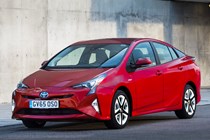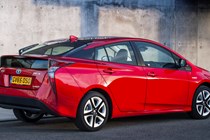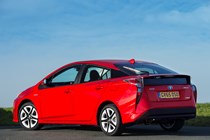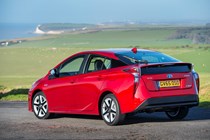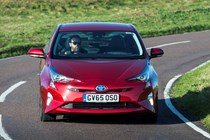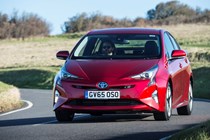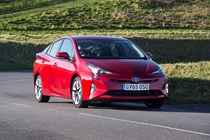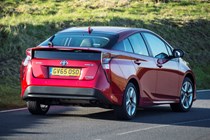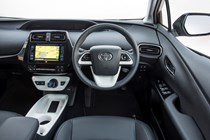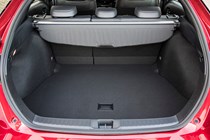
Toyota Prius Hatchback (2015-2022) running costs and reliability
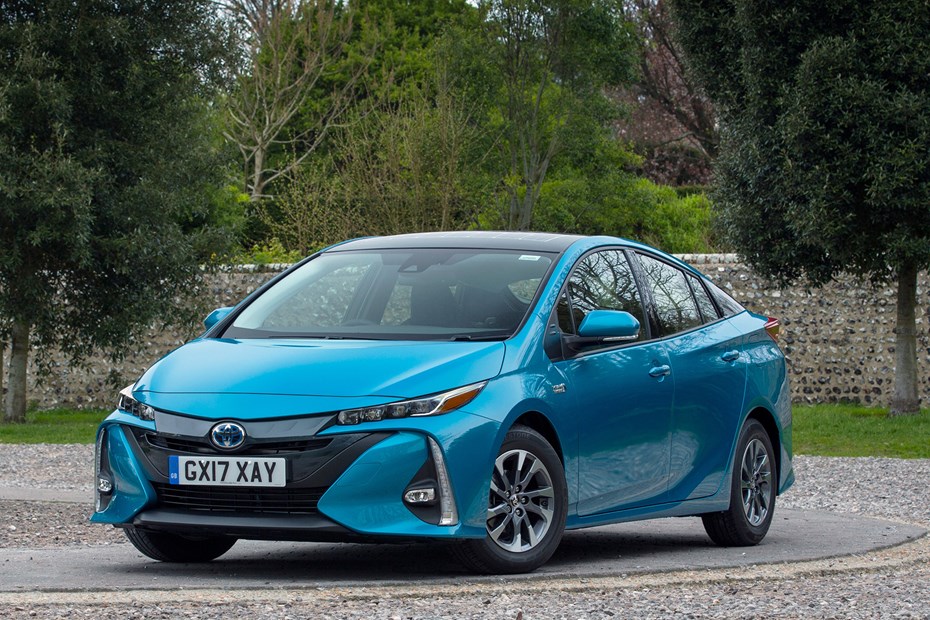
Miles per pound (mpp) ⓘ
| Hybrid petrol engines | 8.6 - 9.9 mpp |
|---|
Fuel economy ⓘ
| Hybrid petrol engines | 58.9 - 67.3 mpg |
|---|
- Versions on 15-inch wheels offer lowest bills
- Least economical model still claims 58.7-58.9mpg
- Despite low emissions, all face same VED bill
Class-leading economy for a non-plug-in hybrid car means Toyota Prius fuel and tax costs are some of the lowest out there with up to 59.6-67.3mpg claimed – while the Plug-in hybrid shrinks these even further with a WLTP-certified average of 188.3-235.4mpg. Regularly charge the Plug-in and you can avoid petrol stations completely if you only make short journeys.
High list prices for both models, however, mean that running costs might be a little higher than you’d like – depending how old the car you buy is and how long you keep it – as there could be a big difference between the initial price and its value when you come to sell.
Despite the low emissions for both models, the fact that neither offers permanent zero-emission running means that you’ll have to pay the standard rate of VED car tax after the first year. There’s also very little difference between Prius and Prius Plug-in in company car tax costs, providing little financial incentive for drivers to choose the pricier car.
The visual aspect of the smaller 15-inch wheels on the standard hybrid is the only reason you might not consider downgrading models fitted with 17-inchers as standard. Stick to the bigger rims and the Prius is claimed to emit 107g/km of CO2.
Because Toyota recognises some people may want a high-spec Prius but want to take advantage of the greater efficiency of the smaller wheels, you can downgrade a couple of inches and have £400 back too. An easy decision to make. Assuming you go for the 15-inch wheels, you will have a better chance of reaching the higher claimed mpg figure, while CO2 emissions drop to 94g/km. Plus the smaller wheels are shod in chunkier tyres with taller sidewalls, so theoretically the alloys are harder to scrape when parking.
Opt for the all-wheel drive model and those numbers don’t change by much, dipping down to 58.7-58.9mpg and rising slightly to 109g/km.
How realistic is the 188.3-235.4mpg economy plug-in claim?
Plug-in often and cover short journeys and you should be able to beat the impressive 188.3-235.4mpg claims. Travel further afield, however, and unless you stop and charge en route you’ll probably get nowhere near this figure.
We achieved 104.6mpg over more than 100 miles – starting with a full battery – reaching a peak of 122.8mpg over 80 miles, totting up a total of 58 miles on electric power alone. This was driving very carefully, though, and 70-80mpg is more likely with everyday driving. With two hours needed to get 65% charge, topping up could quickly become tiresome on long trips.
Emissions for a car that still includes a petrol engine don’t come much lower than the 28-34g/km WLTP claim of the plug-in Toyota Prius. Even the standard car’s official CO2 emissions figure of 94g/km – when fitted with 15-inch alloy wheels – is very low for a conventional hybrid.
Reliability
- Toyota has a long history of making hybrids
- Brand has a strong reliability record
- Build quality is first rate on Prius
A brand new car on a previously unseen platform with completely revised or entirely fresh powertrains sounds like a recipe for reliability teething problems but we expect Toyota Prius reliability to be as bullet-proof as ever.
Although much of the technology is new it builds upon the firm’s expertise in several key areas, plus the hardware and software will see service in a multitude of other Toyotas and Lexus models to come. It might not be market-leading but Toyota’s five-year/100,000-mile warranty is also one of the most comprehensive in the industry.
Ongoing running costs
| Road tax | £20 - £195 |
|---|---|
| Insurance group | 13 - 14 |
Get an insurance quote with

|
|




